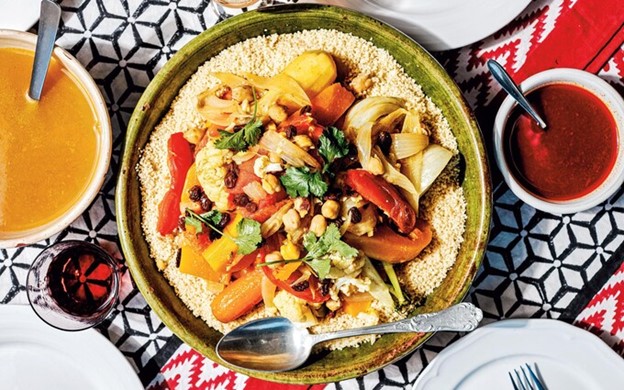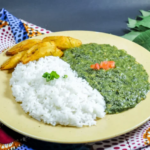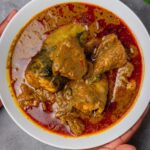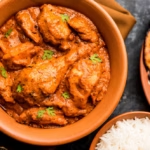When it comes to North African cuisine, one dish stands out as a true culinary gem: couscous. This traditional staple has captured the hearts and taste buds of people around the world with its aromatic flavors, vibrant colors, and incredible versatility. From Morocco to Tunisia, couscous holds a special place in the hearts and kitchens of North African communities.
Couscous is a grain dish made from semolina, which is a coarse flour derived from durum wheat. It is believed to have originated in the Maghreb region of North Africa and has been a dietary staple for centuries. Couscous has not only made its mark on North African cuisine but has also found its way into the culinary traditions of countries across the globe.
The preparation of couscous is an art in itself, requiring patience, skill, and attention to detail. Traditionally, it involves steaming the semolina in a special pot known as a couscoussier. The process involves multiple steamings, during which the grains absorb the flavors of the accompanying ingredients and become tender and fluffy.
The beauty of couscous lies in its versatility. It can be paired with a wide variety of ingredients, making it suitable for both vegetarian and meat-based dishes. In North Africa, couscous is often served with a rich and flavorful stew known as a tagine. Tagines can be made with a range of ingredients, including lamb, chicken, vegetables, and an array of aromatic herbs and spices.
One of the key components of couscous dishes is the aromatic spice blend used to season the dish. Common spices include cumin, coriander, turmeric, ginger, cinnamon, and saffron. These spices not only add depth and complexity to the dish but also infuse the couscous with a tantalizing fragrance that permeates the entire meal.
Another characteristic of North African couscous is the vibrant assortment of vegetables that accompany the grains. Carrots, onions, bell peppers, zucchini, and tomatoes are commonly used to add color, texture, and a burst of freshness to the dish. These vegetables are often cooked alongside the couscous, allowing their flavors to meld together harmoniously.
Couscous is not limited to savory dishes alone. In North African cuisine, it is also used in sweet preparations, creating a delightful blend of flavors. Sweet couscous dishes often feature a combination of fruits, nuts, and warm spices such as cinnamon and nutmeg. Served as a dessert or a special treat, sweet couscous is a testament to the versatility and creativity of this humble grain.
The popularity of couscous has transcended borders and has become a beloved dish in many countries worldwide. Its adaptability makes it a go-to option for those seeking a healthy and satisfying meal. Whether it’s served as a side dish, the star of the show, or a delightful dessert, couscous continues to captivate palates and bring people together around the dinner table.
If you haven’t had the pleasure of trying North African couscous yet, it’s time to embark on a culinary adventure. Explore the aromatic flavors, vibrant colors, and rich traditions that this versatile dish has to offer. Let the fragrant spices and tender grains transport you to the bustling streets and vibrant markets of North Africa, and discover the magic of couscous for yourself.








